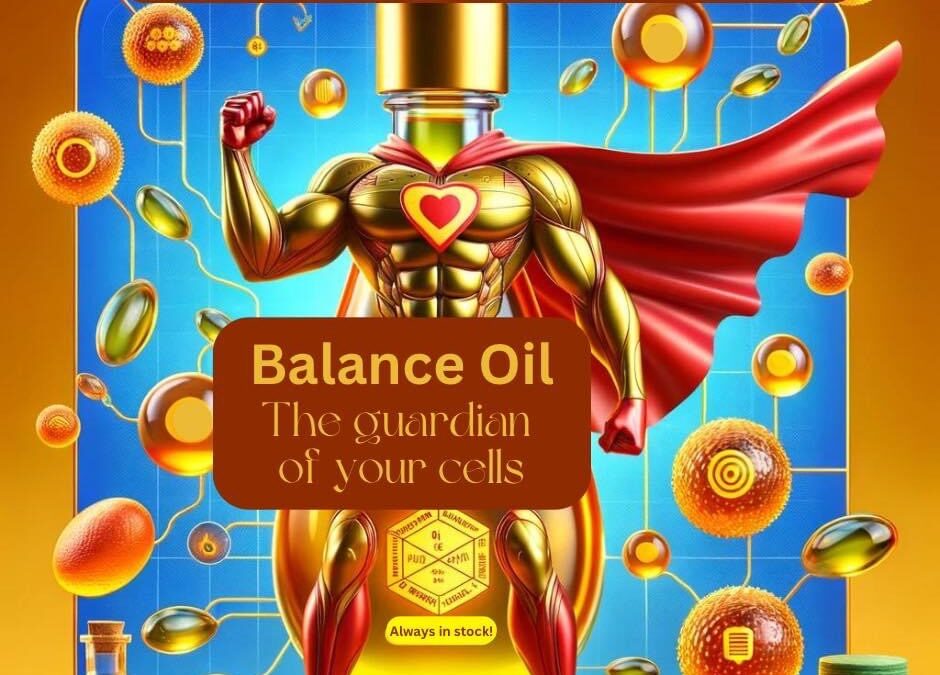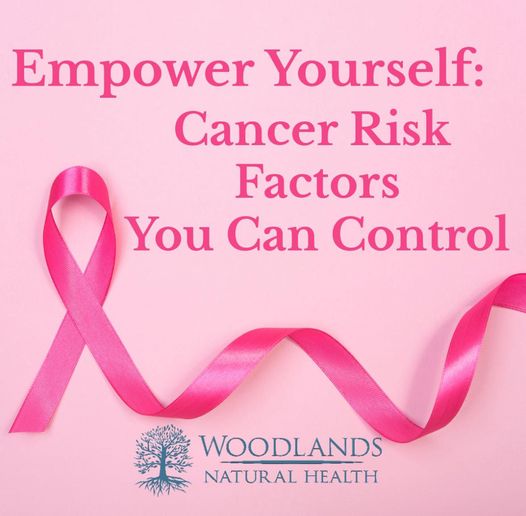
by Woodlands Natural Health | Apr 6, 2024
 (Always available online or in stock at Woodlands Natural Health) 🌊✨
(Always available online or in stock at Woodlands Natural Health) 🌊✨
Why prioritize high-quality omega balance oil in your diet? Because omegas are not just nutrients; they are the guardians of your cells. Here’s why choosing the right omega oil matters:
🔬 Cell Membrane Health: Omegas are crucial to the membrane of every cell in your body, facilitating nutrient absorption and waste removal.
💧 Nutrient Absorption: A balanced omega oil enhances the cell’s ability to absorb essential nutrients, powering every function from brain activity to heart health.
🛡️ Metal-Free Purity: High-quality omega oils are purified to be free from harmful metals, ensuring that you’re nourishing your body without compromise.
The right balance of omega-3, -6, and -9 is vital for:
• Reducing inflammation
• Supporting heart health
• Enhancing brain function
• Promoting skin health
Don’t settle for less when it comes to your health. If you are unsure if your Omega/balance oil is working, we have a lab test available.
Woodlands Natural Health offers only the highest quality, metal-free omega balance oils. Because every cell in your body deserves the best.
Elevate your wellness journey with the purest omega oils. Contact us today to learn more about incorporating high-quality omega balance oil into your diet.

by Woodlands Natural Health | Nov 9, 2023
 Breast cancer is a devastating disease that affects millions of people worldwide. While certain risk factors like age, genetics, and family history are beyond our control, there are proactive steps we can take to reduce our risk and promote overall breast health. In addition to healthy lifestyle choices, certain detoxing services, such as Ozone Therapy, Medical Bioresonance, Micro-current Neurofeedback, and IV Therapy, may offer potential benefits in lowering breast cancer risks. Let’s explore these strategies in more detail.
Breast cancer is a devastating disease that affects millions of people worldwide. While certain risk factors like age, genetics, and family history are beyond our control, there are proactive steps we can take to reduce our risk and promote overall breast health. In addition to healthy lifestyle choices, certain detoxing services, such as Ozone Therapy, Medical Bioresonance, Micro-current Neurofeedback, and IV Therapy, may offer potential benefits in lowering breast cancer risks. Let’s explore these strategies in more detail.
1. Ozone Therapy: Ozone therapy involves introducing ozone into the body to stimulate the immune system and promote detoxification. Ozone therapy helps reduce inflammation, support immune function, enhance circulation, and enhance overall well-being.
2. Medical Bioresonance: Bioresonance therapy is a non-invasive approach that aims to rebalance the body’s energy patterns. It can support overall well-being and improve the body’s ability to detoxify. Similar to the concept of an EKG or EEG, Medical Bioresonance communicates with the body energetically.
4. Micro-Current Neurofeedback: Neurofeedback is a technique that trains the brain to self-regulate brainwave patterns. While not directly linked to breast cancer prevention, neurofeedback can help reduce stress, improve sleep quality, and enhance overall mental well-being. Managing stress and getting adequate sleep are important aspects of maintaining a healthy lifestyle.
5. IV Therapy: Intravenous (IV) therapy delivers essential nutrients directly into the bloodstream, providing a potential avenue for supporting overall health and reducing breast cancer risks. While IV therapy alone does not directly prevent breast cancer, it can help address nutrient deficiencies, boost immune function, and promote overall healthy cellular function.
Additional Ways to Reduce Breast Cancer Risk: it is crucial to adopt a holistic approach to breast cancer prevention. Here are some evidence-based strategies:
– Maintain a healthy weight: Obesity is associated with an increased risk of breast cancer. Regular exercise and a balanced diet can help achieve and maintain a healthy weight.
– Limit alcohol consumption: Research suggests that higher alcohol intake is linked to an increased risk of breast cancer. It’s best to moderate or avoid alcohol altogether.
– Quit smoking: Smoking has been linked to various types of cancer, including breast cancer. Quitting smoking not only reduces the risk of breast cancer but also improves overall health.
– Eat a nutritious diet: Focus on a whole-food diet rich in fruits, vegetables, proteins, and healthy fats. A healthy diet provides essential nutrients and antioxidants that support overall health.
– Stay physically active: Engage in regular physical activity, such as brisk walking, jogging, cycling, or swimming. Aim for at least 150 minutes of moderate-intensity exercise per week.
-Switching to Aluminum-Free Deodorants: Aluminum is a common heavy metal found in many antiperspirants and deodorants. Concerns have been raised about the potential role of aluminum in breast cancer development. Choosing aluminum-free deodorants can be a proactive choice for reducing exposure to this toxin. In addition, eliminating the use of aluminum foil and aluminum cookware is equally as important.
-Reducing Dairy Consumption: Several studies have suggested a potential association between high dairy intake and an increased risk of breast cancer. However, further research is needed to establish a definitive causal relationship. Consumption of dairy may contribute towards unnecessary (and possibly harmful) additional hormone intake.
-Biological Dentist Evaluation: A trained Biological Dentist understands the links between the teeth and other parts of the body including the breasts. Research has shown connections between dental problems and breast cancer.
Conclusion: While we may not be able to completely eliminate the risk of breast cancer, we can take proactive steps to reduce its likelihood. Alongside the lifestyle factors discussed above, exploring services like ozone therapy, medical bioresonance, micro-current neurofeedback, lymphatic drainage, gut detox, and IV therapy will complement those efforts.

by Woodlands Natural Health | Aug 22, 2023
In today’s highly competitive educational landscape, parents and educators are continually seeking innovative strategies to enhance learning outcomes for children. One groundbreaking technique that has gained significant attention is micro-current neurofeedback.
1. Understanding Micro-Current Neurofeedback:
Micro-current neurofeedback is a neurotherapy technique involving the application of weak, painless electrical currents to specific areas of the brain. This process facilitates the retraining of neural pathways, promoting healthier and more efficient neural communication. By modulating brainwave patterns, micro-current neurofeedback promotes optimal brain functioning and stability.
2. Enhanced Focus and Attention:
One of the key benefits of micro-current neurofeedback is its ability to enhance focus and attention in children. By addressing imbalances in electrical brain activity, the technique helps children sustain attention and concentrate better on tasks. Improved focus enables students to engage more effectively in their studies, absorb information more efficiently, and maintain higher levels of productivity.
3. Stress Reduction and Emotional Regulation:
Excessive stress and emotional dysregulation can significantly impact a child’s academic performance. Micro-current neurofeedback has been found to reduce stress levels and enhance emotional regulation by facilitating a state of calm and balance in the brain. As a result, children experience reduced anxiety, increased resilience, and improved emotional well-being. This positive mindset allows them to better navigate challenging situations at school, resulting in improved performance.
4. Memory Enhancement:
A strong memory is crucial for academic success as it supports effective learning and efficient retrieval of information. By optimizing neural connections related to memory retention and retrieval, this technique strengthens recall, storage, and organization of information. Consequently, students are better equipped to absorb and retain knowledge, leading to enhanced learning outcomes.
5. Cognitive Flexibility and Problem-Solving Skills:
Micro-current neurofeedback has also been found to enhance cognitive flexibility, enabling children to adapt to new situations and problem-solving challenges more effectively. By promoting structural changes in the brain, this technique facilitates improved information processing, creativity, and critical thinking abilities. Consequently, students become more adept at adapting to changing educational requirements and developing innovative solutions to complex academic problems.
Micro-current neurofeedback represents a powerful tool to support children’s brain function and stimulate improved performance in school. By addressing issues related to focus, attention, stress reduction, memory enhancement, and cognitive flexibility, this technique equips students with the neurobiological foundation needed for academic success. As educators and parents continue exploring innovative approaches to enhance learning outcomes, micro-current neurofeedback stands out as a remarkable intervention that can transform children’s educational journeys.
Call Woodlands Natural Health (936) 224-4948 to schedule.

by Woodlands Natural Health | Jul 25, 2023
As summer approaches, many of us will be reaching for our trusty bottle of sunscreen to protect our skin from the harsh rays of the sun. While sunscreen is a great tool for preventing sunburn and reducing the risk of skin cancer, it’s important to be aware of the potentially harmful chemicals that some sunscreens contain.
One of the main ingredients to avoid in sunscreen is oxybenzone, a chemical that has been linked to hormone disruption, cell damage, and allergic reactions. It’s often found in chemical sunscreens and can be absorbed into the skin and even into the bloodstream. Additionally, studies have shown that oxybenzone can harm coral reefs, so if you plan to use sunscreen while swimming in the ocean, choose a reef-safe alternative.
Another harmful ingredient to watch out for is retinyl palmitate, a form of vitamin A that can increase the risk of skin cancer when exposed to sunlight. This ingredient is often found in anti-aging creams and other beauty products, so be sure to double-check the labels before purchasing sunscreen.
Other potentially toxic ingredients to avoid include parabens, phthalates, and synthetic fragrances. These chemicals have been linked to various health issues, including reproductive problems, decreased fertility, and even cancer.
Luckily, there are plenty of safer options when it comes to sunscreen. Look for mineral sunscreens that use ingredients like zinc oxide and titanium dioxide. These ingredients create a physical barrier on the skin that reflects the sun’s rays rather than absorbing them. Many mineral sunscreens are also reef-safe and biodegradable, making them a better choice for both your skin and the environment.
Overall, it’s important to be informed about the potential dangers of sunscreen and the harmful chemicals it may contain. By doing your research and choosing safer alternatives, you can still protect your skin while avoiding unnecessary risks to your health and the environment.

 (Always available online or in stock at Woodlands Natural Health) 🌊✨
(Always available online or in stock at Woodlands Natural Health) 🌊✨


